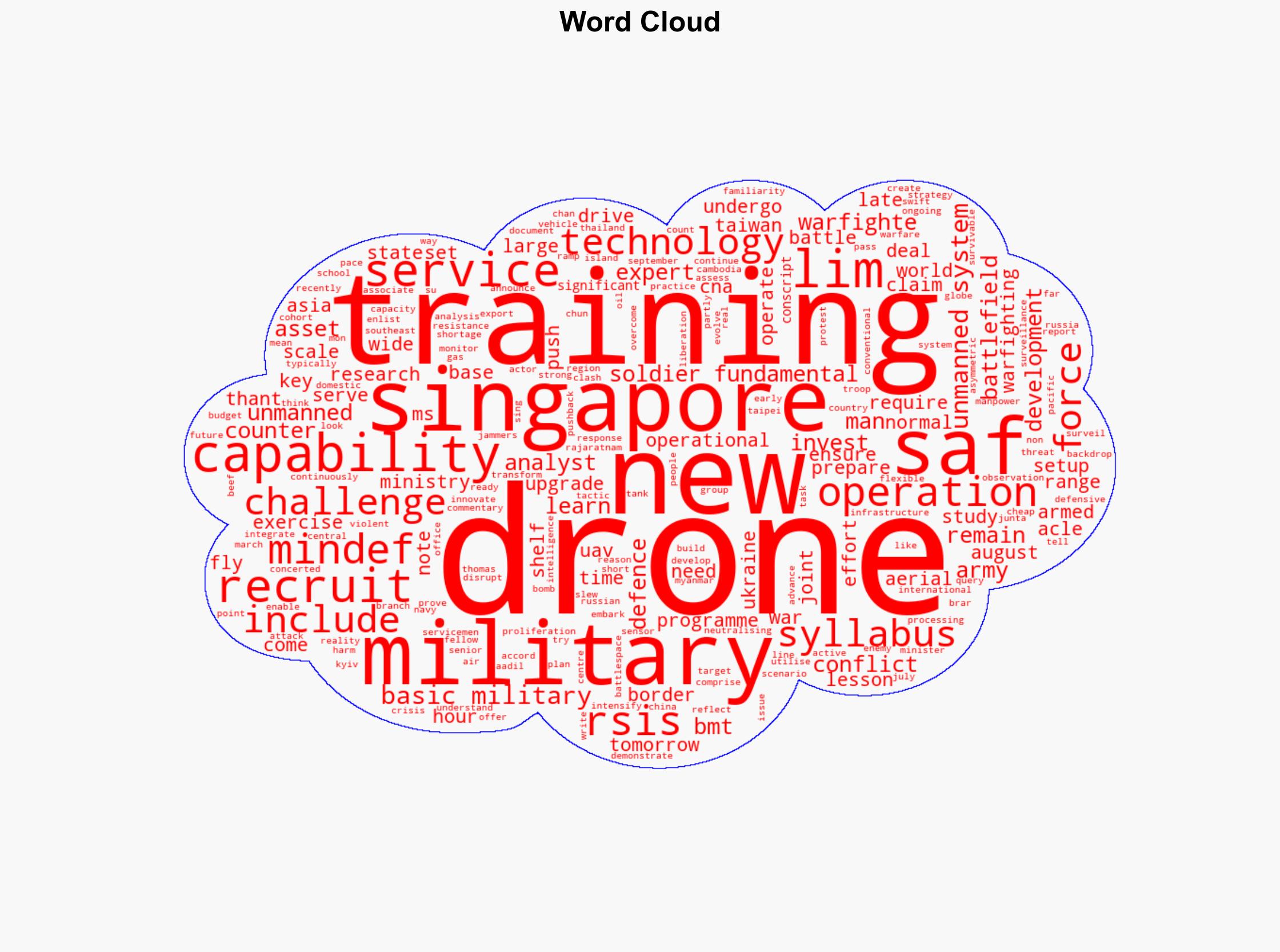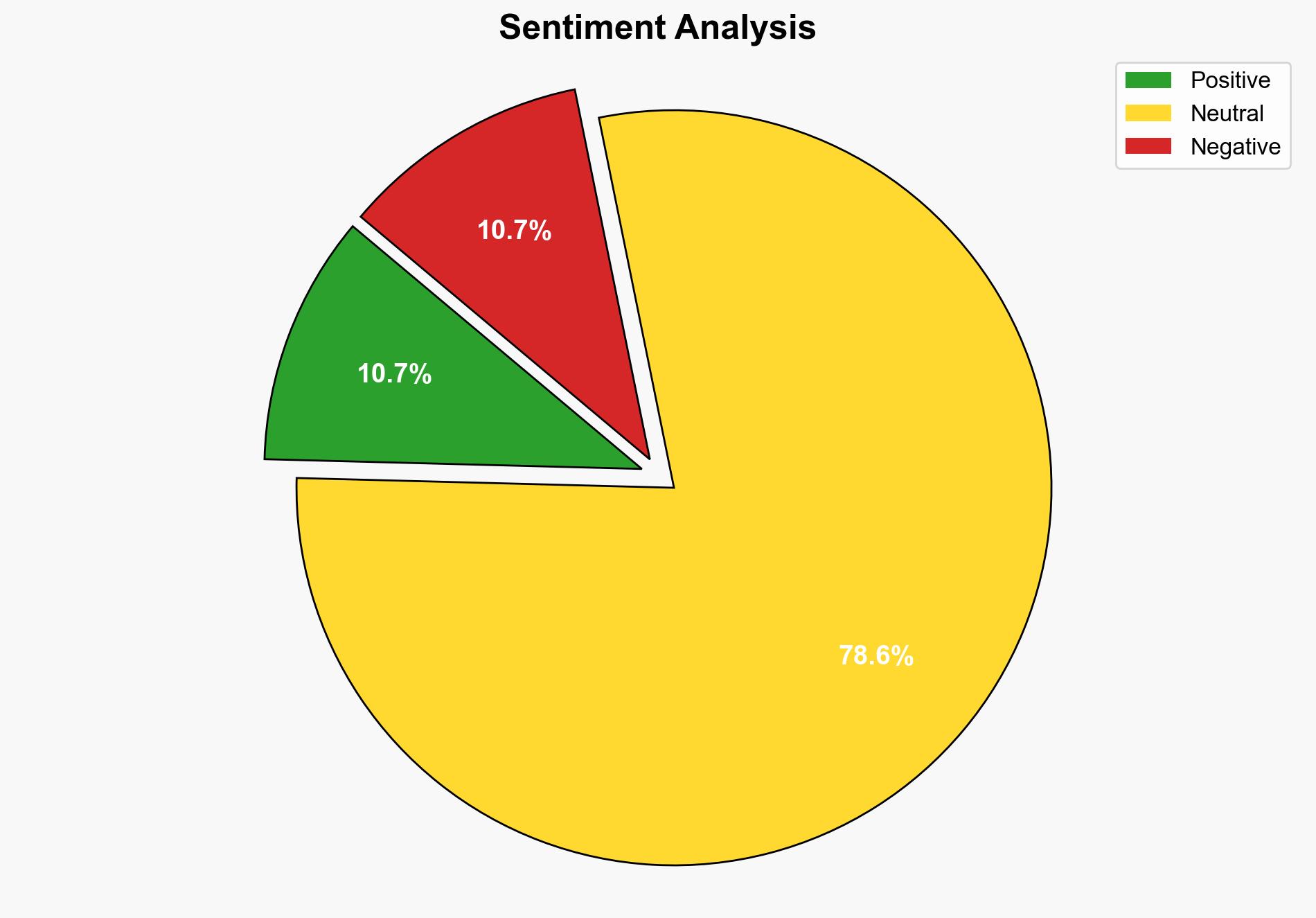Analysis Singapore military’s drone advance reflects new battlefield realities but challenges remain – CNA
Published on: 2025-08-31
Intelligence Report: Analysis Singapore military’s drone advance reflects new battlefield realities but challenges remain – CNA
1. BLUF (Bottom Line Up Front)
Singapore’s military is advancing its drone capabilities to address new battlefield realities, but faces challenges in integration and training. The most supported hypothesis suggests that while Singapore is making strategic investments in drone technology, the lack of real-world conflict experience limits its operational effectiveness. Confidence level: Moderate. Recommended action: Enhance joint training exercises and simulation-based scenarios to improve readiness.
2. Competing Hypotheses
1. **Hypothesis A**: Singapore’s military drone advancements will significantly enhance its operational capabilities, allowing it to effectively counter regional threats and adapt to modern warfare.
2. **Hypothesis B**: Despite advancements in drone technology, Singapore’s military will face significant challenges in integrating these systems into existing frameworks, limiting their effectiveness in real-world scenarios.
Using ACH 2.0, Hypothesis B is better supported due to the challenges highlighted in training, integration, and lack of real-world practice, which are critical for effective deployment of drone technology.
3. Key Assumptions and Red Flags
– **Assumptions**: It is assumed that technological advancements alone can overcome the challenges posed by limited manpower and integration issues.
– **Red Flags**: The lack of real-world conflict experience is a significant blind spot that could undermine operational readiness. There is also a potential over-reliance on technology without sufficient human skill development.
4. Implications and Strategic Risks
– **Implications**: If integration challenges are not addressed, Singapore may struggle to maintain its strategic edge in the region. The reliance on drones without adequate training could lead to vulnerabilities in both offensive and defensive operations.
– **Strategic Risks**: Failure to effectively integrate drones could result in operational gaps that adversaries might exploit. Additionally, the rapid pace of technological change could outstrip the military’s ability to adapt, leading to obsolescence.
5. Recommendations and Outlook
- Enhance joint training exercises with a focus on real-world scenarios to improve integration and operational readiness.
- Invest in simulation-based training to compensate for the lack of real-world conflict experience.
- Scenario Projections:
- Best: Successful integration leads to enhanced regional security and deterrence capabilities.
- Worst: Integration failures result in operational vulnerabilities and reduced deterrence.
- Most Likely: Gradual improvement in capabilities with ongoing challenges in integration and training.
6. Key Individuals and Entities
– Chan Chun Sing
– Ms. Su Mon Thant
– Aadil Brar
– Thomas Lim
7. Thematic Tags
national security threats, cybersecurity, counter-terrorism, regional focus




